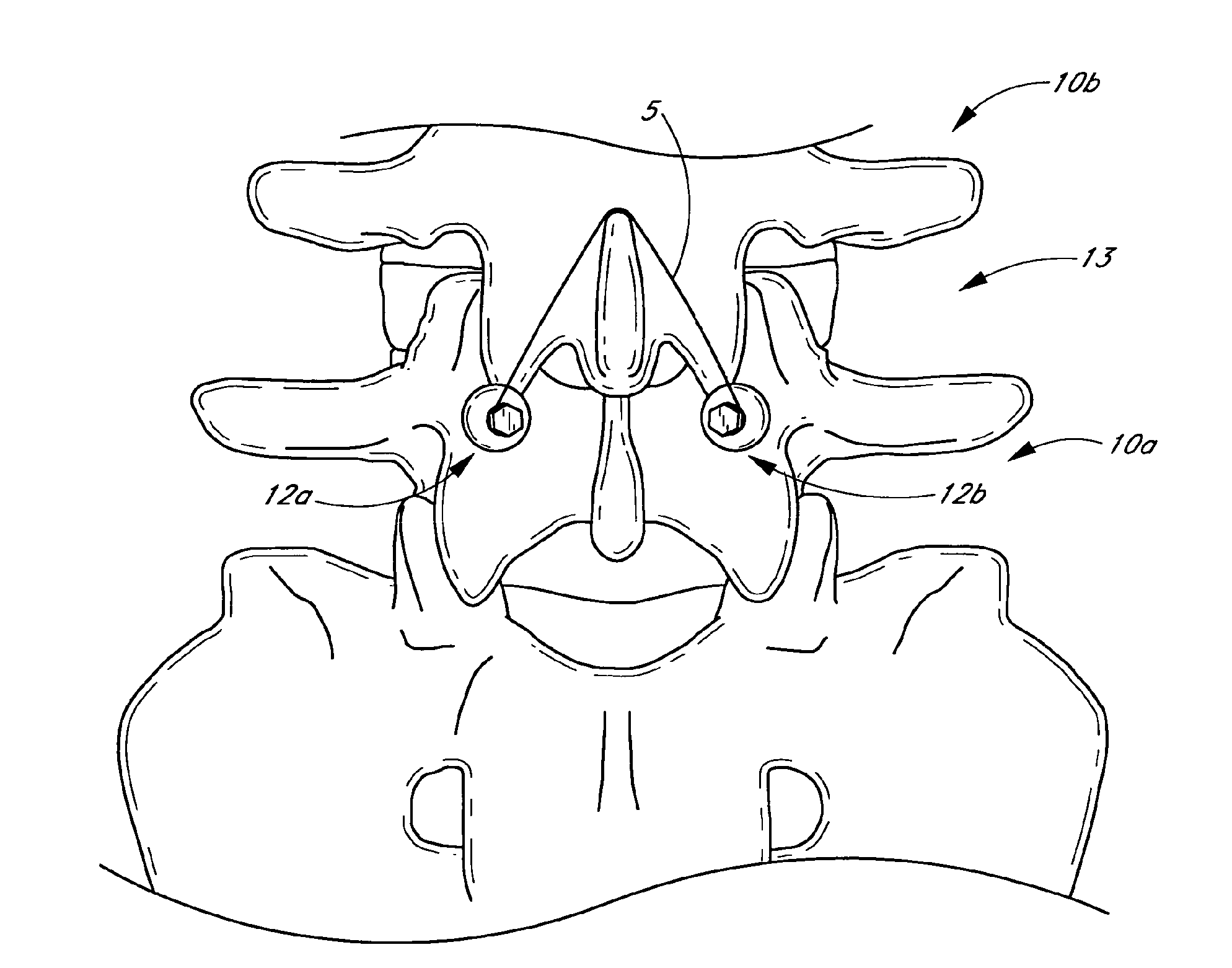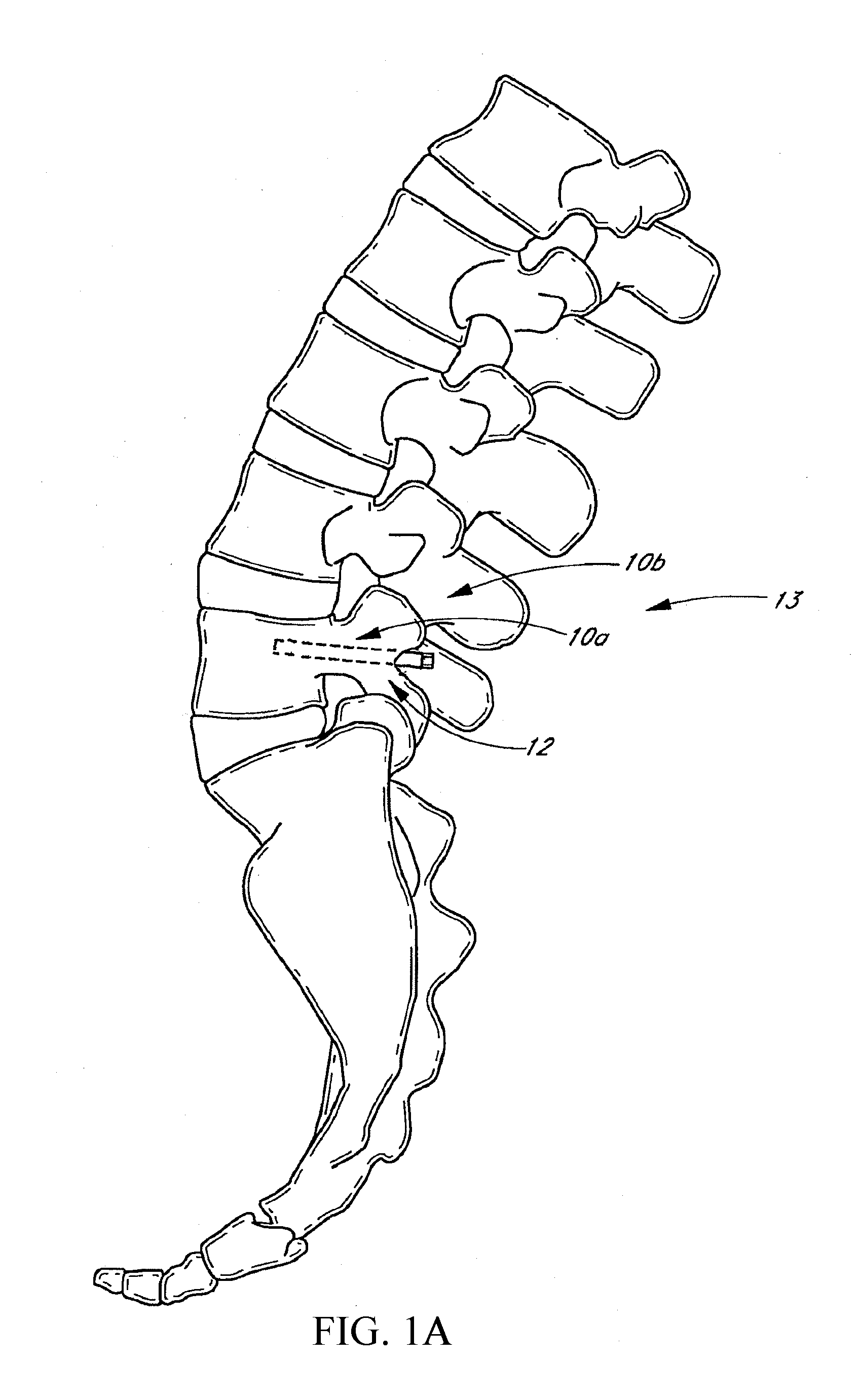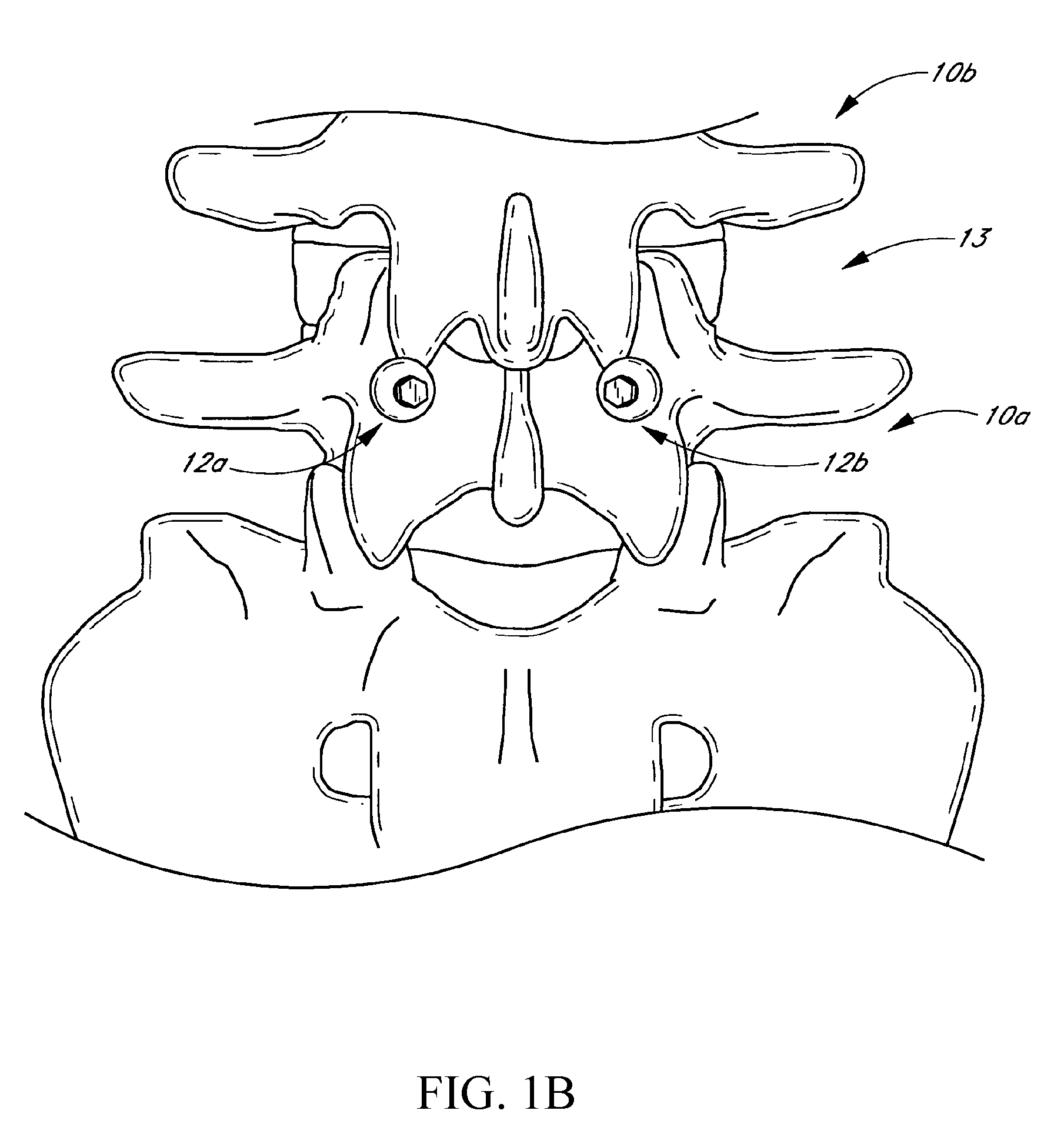Method and apparatus for spinal stabilization
a spinal stabilization and apparatus technology, applied in the field of medical devices, can solve the problems of high cost, long in-patient hospital stay, and increased pain of open procedures, and achieve the effects of improving the stability of the spinal column
- Summary
- Abstract
- Description
- Claims
- Application Information
AI Technical Summary
Problems solved by technology
Method used
Image
Examples
Embodiment Construction
[0031]Although the stabilization devices described herein will be disclosed primarily in the context of a spinal stabilization procedure, the methods and structures disclosed herein are intended for application in any of a variety medical applications, as will be apparent to those of skill in the art in view of the disclosure herein.
[0032]FIGS. 1A and 1B are side and rear elevational views of a pair of bone stabilization devices 12, positioned within a body structure 10a of the spine. As will be explained in detail below, the bone stabilization device 12 may be used in a variety of techniques to stabilize the spine. In some embodiments, the device 12 is attached (e.g., inserted or screwed into) and / or coupled to a single body structure and limits motion of a second body structure. In some embodiments, the device 12 limits extension in the spine by being attached and / or coupled to an inferior body structure and limiting motion of an adjacent superior body structure. “Body structure” ...
PUM
 Login to View More
Login to View More Abstract
Description
Claims
Application Information
 Login to View More
Login to View More - R&D
- Intellectual Property
- Life Sciences
- Materials
- Tech Scout
- Unparalleled Data Quality
- Higher Quality Content
- 60% Fewer Hallucinations
Browse by: Latest US Patents, China's latest patents, Technical Efficacy Thesaurus, Application Domain, Technology Topic, Popular Technical Reports.
© 2025 PatSnap. All rights reserved.Legal|Privacy policy|Modern Slavery Act Transparency Statement|Sitemap|About US| Contact US: help@patsnap.com



